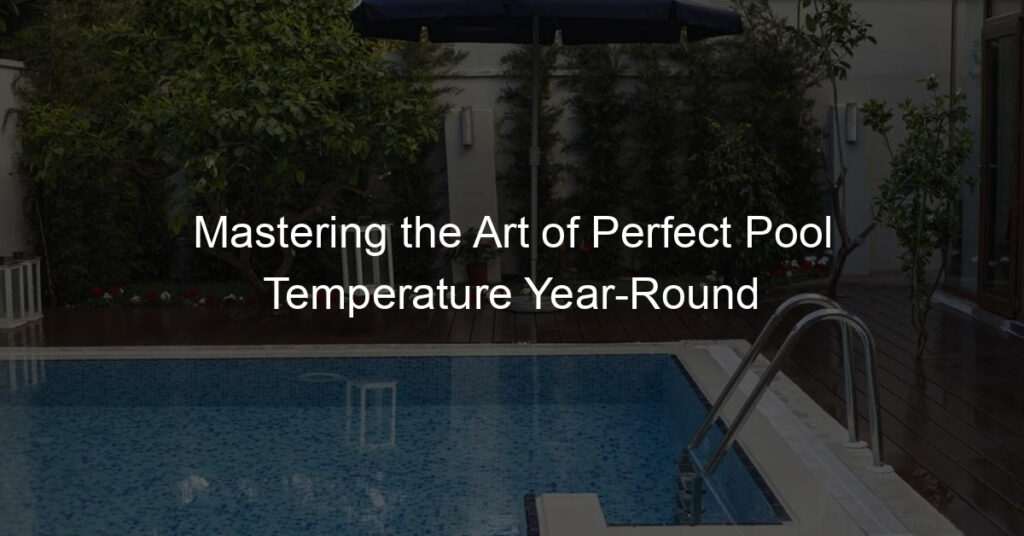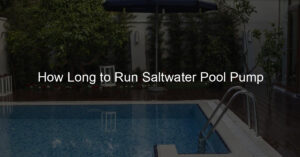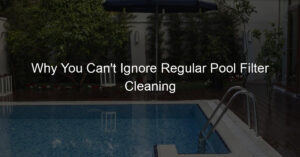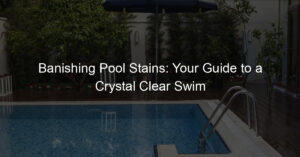Introduction to Pool Temperature Control
Swimming pools are a great way to relax, exercise, and have fun. But, did you know that the temperature of your pool plays a crucial role in your swimming experience? Let’s dive into the world of pool temperature control and discover its importance and benefits.
-
- Understanding the importance of pool temperature regulation
Regulating the temperature of your pool is not just about comfort, it’s also about safety and health. When the pool’s temperature is too high, it can promote the growth of bacteria and algae, which can lead to health issues. On the other hand, a pool that’s too cold can cause hypothermia, especially in children and the elderly. Moreover, the right pool temperature can enhance your swimming performance and make your swim more enjoyable.
-
- Benefits of maintaining the perfect pool temperature year-round
Keeping your pool at the perfect temperature all year round has many benefits. Firstly, it extends your swimming season, allowing you to enjoy your pool even in cooler months. Secondly, it helps to maintain the pool’s chemical balance, reducing the need for excessive chemical use. Lastly, a well-regulated pool temperature can increase the lifespan of your pool equipment, saving you money in the long run.
Now that we’ve understood the importance of pool temperature control and its benefits, let’s explore how we can achieve the perfect pool temperature throughout the year. Stay tuned!
Understanding Pool Temperature
When it comes to swimming, the temperature of the pool plays a significant role in the overall experience. It’s not just about comfort; the right pool temperature can enhance performance, ensure safety, and even contribute to health benefits. But what is the perfect pool temperature, and how does it impact your swimming experience? Let’s dive in and find out.
What is the Perfect Pool Temperature?
The ‘perfect’ pool temperature can vary depending on several factors. It’s not a one-size-fits-all answer. There are two key aspects to consider when determining the optimal pool temperature:
- Factors determining the optimal pool temperature
- How different temperatures affect your swimming experience
Factors Determining the Optimal Pool Temperature
Several factors can influence what might be considered the ‘perfect’ pool temperature. These include:
- Activity Level: If you’re engaging in high-energy activities like water aerobics or competitive swimming, a cooler pool might be preferable. On the other hand, for leisurely swimming or relaxation, a warmer pool might be more comfortable.
- Personal Preference: Everyone’s comfort level with temperature can vary. Some people prefer a cooler pool, while others might enjoy a warmer one.
- Health Considerations: Certain health conditions can affect how a person reacts to different temperatures. For instance, people with arthritis might find relief in a warmer pool.
How Different Temperatures Affect Your Swimming Experience
Different pool temperatures can have various effects on your swimming experience. Here’s how:
- Cooler Pools (Below 70°F): These are ideal for intense swimming workouts or races. The cooler water helps regulate body heat, but it might be too chilly for leisurely swimming or relaxation.
- Comfortable Pools (70-78°F): This range is often considered ideal for regular swimming. It’s warm enough for comfort, but not so warm that it hinders physical activity.
- Warmer Pools (Above 78°F): These are typically used for relaxation and therapeutic purposes. The warm water can help soothe muscles and joints, but it might be too warm for intense physical activity.
Understanding the factors that determine the optimal pool temperature and how different temperatures affect your swimming experience can help you make informed decisions about your pool’s temperature. Remember, the ‘perfect’ pool temperature is subjective and can vary based on personal preference, activity level, and health considerations.
Seasonal Changes and Pool Temperature
Understanding how the changing seasons affect your pool temperature is crucial for maintaining a comfortable swimming environment. Let’s dive into the details.
-
- How seasons affect pool temperature
Each season brings a different climate, and these changes in weather can have a significant impact on your pool’s temperature. In the summer, the hot sun can heat up your pool, making it a perfect place to cool off. However, in the winter, the colder air and less sunlight can cause your pool’s temperature to drop, making it less inviting for a swim.
Spring and autumn, being transitional seasons, can bring a mix of temperatures. In spring, as the weather starts to warm up, your pool’s temperature will gradually increase. In contrast, in autumn, as the weather cools down, your pool’s temperature will slowly decrease.
-
- Seasonal pool care for maintaining pool temperature
Maintaining a consistent pool temperature throughout the year requires some effort. Here are some tips to help you manage your pool temperature according to the season:
| Season | Pool Care Tips |
|---|---|
| Summer | Use a solar cover to prevent excessive heat loss at night. |
| Winter | Consider using a pool heater to maintain a comfortable swimming temperature. |
| Spring | Start using a solar cover to help heat up your pool as the weather warms. |
| Autumn | Continue using a solar cover to retain heat and slow down the cooling process. |
Remember, every pool is different, and what works for one may not work for another. The key is to monitor your pool’s temperature regularly and adjust your care routine as needed.
Year-Round Pool Heating Solutions
Keeping your pool at the perfect temperature year-round can be a challenge. But with the right maintenance and heating solutions, it’s more than possible. Let’s dive into the details.
Swimming Pool Maintenance for Temperature Control
Proper maintenance is key to keeping your pool at the right temperature. Here are some tasks you should regularly perform and ways to improve your pool heater’s efficiency.
-
- Regular tasks for maintaining pool temperature
Regular maintenance is crucial for a well-functioning pool. Here are some tasks you should perform regularly:
-
-
- Monitor the temperature: Keep a close eye on your pool’s temperature. A slight change can indicate a problem with your heating system.
- Clean the pool: A clean pool is a happy pool. Regular cleaning prevents debris from clogging your heater and affecting its performance.
- Check the heater: Regularly inspect your pool heater for signs of wear and tear. Early detection of problems can save you from costly repairs in the future.
- How to improve pool heater efficiency
-
Improving your pool heater’s efficiency can help maintain the perfect pool temperature. Here are some tips:
-
- Use a pool cover: A pool cover can prevent heat loss and reduce your heating costs by up to 50%.
- Install a high-efficiency heater: High-efficiency pool heaters use less energy and can save you money in the long run.
- Regular maintenance: As mentioned earlier, regular maintenance can keep your heater running at peak efficiency.
With these tips, you can maintain your pool’s temperature and improve your heater’s efficiency. The result? A comfortable, inviting pool all year round.
All-Season Pool Temperature Control Solutions
Whether you’re a pool owner or a frequent swimmer, maintaining the right pool temperature all year round is crucial. Not only does it ensure a comfortable swimming experience, but it also helps to maintain the health of your pool. Let’s explore some solutions that can help you control your pool temperature in both winter and summer.
-
- Pool Heating Solutions for Winter
In winter, keeping your pool warm is essential. A cold pool can be uncomfortable and even harmful to your health. There are several ways to heat your pool during the colder months:
-
-
- Pool Heaters: These devices use natural gas, propane, or electricity to heat your pool water. They are efficient and can quickly raise the temperature of your pool.
- Heat Pumps: Heat pumps extract heat from the air and use it to warm your pool water. They are energy-efficient and can maintain a consistent pool temperature.
- Solar Heaters: Solar heaters use the sun’s energy to heat your pool. They are eco-friendly and can significantly reduce your energy bills.
- Keeping Your Pool Cool in Summer
-
During the hot summer months, your pool can become uncomfortably warm. Here are some ways to keep your pool cool:
-
- Pool Coolers: Similar to pool heaters, pool coolers can lower the temperature of your pool water. They work by evaporating a small amount of water, which cools the rest of the pool.
- Shade Sails: Installing shade sails over your pool can help to block the sun’s rays, reducing the temperature of your pool water.
- Nighttime Swimming: Swimming at night can be a great way to avoid the heat of the day. The pool water will naturally cool down during the night.
By implementing these solutions, you can enjoy your pool all year round, regardless of the weather. Remember, the key to maintaining a comfortable pool temperature is regular monitoring and adjustment. Happy swimming!
Case Studies on Pool Temperature Regulation
Understanding how to regulate pool temperature effectively is crucial for both comfort and safety. Let’s delve into some real-life examples to learn more.
Effective Pool Temperature Control in Residential Pools
Residential pools present unique challenges in temperature regulation. Let’s explore a case study that illustrates how these challenges can be successfully addressed.
-
- Case Study 1: Achieving the Perfect Pool Temperature in a Residential Setting
Consider the case of the Smith family, who live in a temperate climate and own a medium-sized outdoor pool. They struggled with maintaining a comfortable pool temperature, especially during the cooler months. After researching various solutions, they decided to invest in a high-quality pool heater and a solar blanket.
The pool heater allowed them to raise the water temperature to their desired level, while the solar blanket helped retain the heat, especially during the night. As a result, they were able to enjoy their pool year-round, with the water temperature consistently staying between 78-82°F, which is the recommended range for recreational swimming.
- Key Takeaways from the Case Study
- Investing in a good pool heater can provide the flexibility to adjust the water temperature as desired.
- Using a solar blanket can help retain heat, reducing the energy required to keep the pool warm.
- Regular monitoring and adjustment of the pool temperature can ensure a comfortable and safe swimming environment.
In conclusion, effective pool temperature regulation in a residential setting involves a combination of the right equipment, regular monitoring, and timely adjustments. As the Smith family’s experience shows, with the right approach, it’s possible to maintain the perfect pool temperature year-round.
Year-Round Pool Temperature Management in Public Pools
Managing the temperature of a public pool throughout the year can be a challenging task. It requires a thorough understanding of pool heating solutions, careful planning, and efficient execution. Let’s delve into a case study that showcases effective year-round pool heating in a public pool.
- Case Study 2: Effective Year-Round Pool Heating in a Public Pool
The public pool in question is located in a region with a cold climate, where maintaining a comfortable pool temperature year-round is crucial. The pool management decided to install a high-efficiency heat pump system, supplemented by solar heating panels.
During the colder months, the heat pump system was used primarily, utilizing the ambient air to heat the pool water. In contrast, during the sunnier months, the solar heating panels were used to supplement the heat pump system, harnessing the power of the sun to maintain the pool’s temperature.
This dual approach resulted in a consistent pool temperature throughout the year, providing a comfortable swimming environment for the public. The pool management reported an increase in pool usage and positive feedback from the swimmers.
- Lessons Learned from the Case Study
This case study provides valuable insights into managing pool temperature effectively. Here are some key takeaways:
- Understand the Climate: The climate of the location plays a significant role in deciding the type of pool heating solution. In this case, a combination of a heat pump system and solar heating panels was effective.
- Efficient Use of Resources: By using the heat pump system and solar panels strategically, the pool management was able to maintain the pool temperature effectively while conserving energy.
- Customer Satisfaction: Maintaining a consistent pool temperature year-round can enhance the swimming experience, leading to increased pool usage and customer satisfaction.
By understanding the specific needs and challenges of their pool, managers can implement effective temperature management strategies, ensuring a comfortable and enjoyable swimming environment year-round.
Conclusion: Mastering the Art of Pool Temperature
As we reach the end of our discussion on pool temperature control, it’s crucial to remember the key points we’ve covered. Let’s take a moment to recap the importance of pool temperature control and share some final thoughts on achieving and maintaining the perfect pool temperature year-round.
-
- Recap of the importance of pool temperature control:
Pool temperature control is more than just a luxury; it’s a necessity for the safety and comfort of swimmers. A well-regulated pool temperature can prevent health issues like hypothermia or heatstroke. It also enhances the swimming experience, making the pool inviting and enjoyable regardless of the weather outside. As we’ve seen in our case studies, effective pool temperature regulation can also lead to energy savings and cost efficiency.
-
- Final thoughts on achieving and maintaining the perfect pool temperature year-round:
Achieving the perfect pool temperature isn’t a one-time task. It requires continuous monitoring and adjustments, especially as seasons change. Utilizing the right pool heating solutions, understanding the science behind pool temperature, and regularly checking your pool’s temperature are all essential steps in this process. Remember, the ‘perfect’ pool temperature may vary based on personal preference, the type of swimming activity, and the age and health of the swimmers. Therefore, flexibility and adaptability are key in mastering the art of pool temperature control.
In conclusion, mastering the art of pool temperature control is a blend of science, technology, and personal preference. It’s about understanding the importance of temperature control, making informed decisions about heating solutions, and continuously monitoring and adjusting the pool temperature. With the right knowledge and tools, you can ensure a safe, comfortable, and enjoyable swimming experience year-round.














